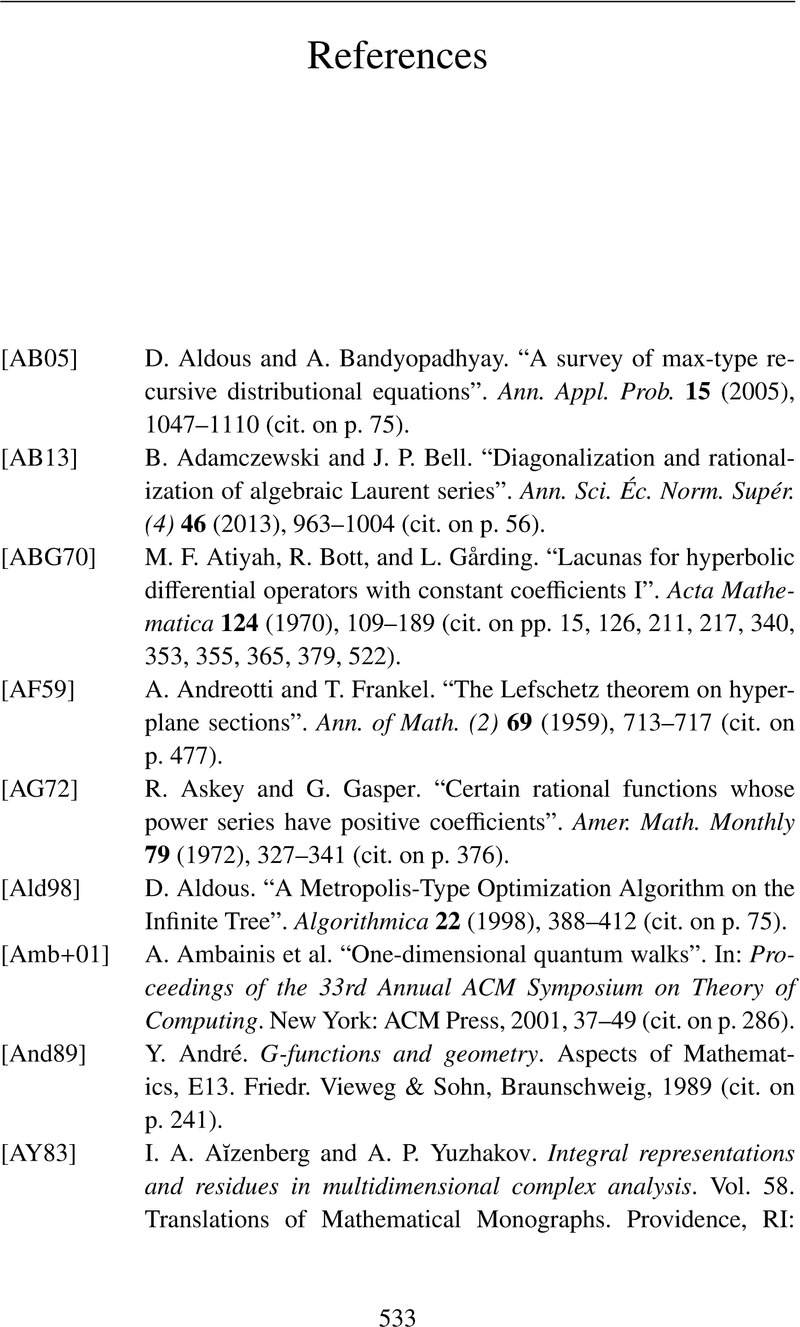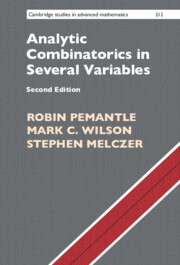Book contents
- Frontmatter
- Dedication
- Contents
- Preface to the second edition
- Preface to the first edition
- List of Symbols
- Part I Combinatorial Enumeration
- Part II Mathematical Background
- Part III Multivariate Enumeration
- Appendix A Integration on manifolds
- Appendix B Algebraic topology
- Appendix C Residue forms and classical Morse theory
- Appendix D Stratification and stratified Morse theory
- References
- Author Index
- Subject Index
- References
References
Published online by Cambridge University Press: 08 February 2024
- Frontmatter
- Dedication
- Contents
- Preface to the second edition
- Preface to the first edition
- List of Symbols
- Part I Combinatorial Enumeration
- Part II Mathematical Background
- Part III Multivariate Enumeration
- Appendix A Integration on manifolds
- Appendix B Algebraic topology
- Appendix C Residue forms and classical Morse theory
- Appendix D Stratification and stratified Morse theory
- References
- Author Index
- Subject Index
- References
Summary

- Type
- Chapter
- Information
- Analytic Combinatorics in Several Variables , pp. 533 - 552Publisher: Cambridge University PressPrint publication year: 2024

